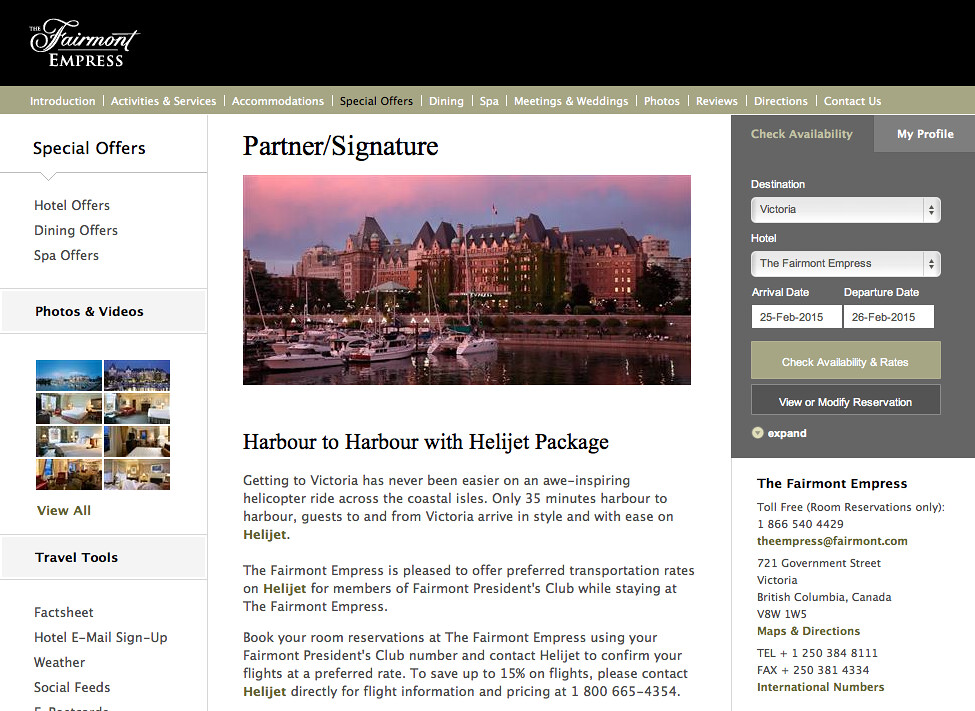8.5: Reaching the Consumer
- Page ID
- 9349
\( \newcommand{\vecs}[1]{\overset { \scriptstyle \rightharpoonup} {\mathbf{#1}} } \)
\( \newcommand{\vecd}[1]{\overset{-\!-\!\rightharpoonup}{\vphantom{a}\smash {#1}}} \)
\( \newcommand{\dsum}{\displaystyle\sum\limits} \)
\( \newcommand{\dint}{\displaystyle\int\limits} \)
\( \newcommand{\dlim}{\displaystyle\lim\limits} \)
\( \newcommand{\id}{\mathrm{id}}\) \( \newcommand{\Span}{\mathrm{span}}\)
( \newcommand{\kernel}{\mathrm{null}\,}\) \( \newcommand{\range}{\mathrm{range}\,}\)
\( \newcommand{\RealPart}{\mathrm{Re}}\) \( \newcommand{\ImaginaryPart}{\mathrm{Im}}\)
\( \newcommand{\Argument}{\mathrm{Arg}}\) \( \newcommand{\norm}[1]{\| #1 \|}\)
\( \newcommand{\inner}[2]{\langle #1, #2 \rangle}\)
\( \newcommand{\Span}{\mathrm{span}}\)
\( \newcommand{\id}{\mathrm{id}}\)
\( \newcommand{\Span}{\mathrm{span}}\)
\( \newcommand{\kernel}{\mathrm{null}\,}\)
\( \newcommand{\range}{\mathrm{range}\,}\)
\( \newcommand{\RealPart}{\mathrm{Re}}\)
\( \newcommand{\ImaginaryPart}{\mathrm{Im}}\)
\( \newcommand{\Argument}{\mathrm{Arg}}\)
\( \newcommand{\norm}[1]{\| #1 \|}\)
\( \newcommand{\inner}[2]{\langle #1, #2 \rangle}\)
\( \newcommand{\Span}{\mathrm{span}}\) \( \newcommand{\AA}{\unicode[.8,0]{x212B}}\)
\( \newcommand{\vectorA}[1]{\vec{#1}} % arrow\)
\( \newcommand{\vectorAt}[1]{\vec{\text{#1}}} % arrow\)
\( \newcommand{\vectorB}[1]{\overset { \scriptstyle \rightharpoonup} {\mathbf{#1}} } \)
\( \newcommand{\vectorC}[1]{\textbf{#1}} \)
\( \newcommand{\vectorD}[1]{\overrightarrow{#1}} \)
\( \newcommand{\vectorDt}[1]{\overrightarrow{\text{#1}}} \)
\( \newcommand{\vectE}[1]{\overset{-\!-\!\rightharpoonup}{\vphantom{a}\smash{\mathbf {#1}}}} \)
\( \newcommand{\vecs}[1]{\overset { \scriptstyle \rightharpoonup} {\mathbf{#1}} } \)
\( \newcommand{\vecd}[1]{\overset{-\!-\!\rightharpoonup}{\vphantom{a}\smash {#1}}} \)
\(\newcommand{\avec}{\mathbf a}\) \(\newcommand{\bvec}{\mathbf b}\) \(\newcommand{\cvec}{\mathbf c}\) \(\newcommand{\dvec}{\mathbf d}\) \(\newcommand{\dtil}{\widetilde{\mathbf d}}\) \(\newcommand{\evec}{\mathbf e}\) \(\newcommand{\fvec}{\mathbf f}\) \(\newcommand{\nvec}{\mathbf n}\) \(\newcommand{\pvec}{\mathbf p}\) \(\newcommand{\qvec}{\mathbf q}\) \(\newcommand{\svec}{\mathbf s}\) \(\newcommand{\tvec}{\mathbf t}\) \(\newcommand{\uvec}{\mathbf u}\) \(\newcommand{\vvec}{\mathbf v}\) \(\newcommand{\wvec}{\mathbf w}\) \(\newcommand{\xvec}{\mathbf x}\) \(\newcommand{\yvec}{\mathbf y}\) \(\newcommand{\zvec}{\mathbf z}\) \(\newcommand{\rvec}{\mathbf r}\) \(\newcommand{\mvec}{\mathbf m}\) \(\newcommand{\zerovec}{\mathbf 0}\) \(\newcommand{\onevec}{\mathbf 1}\) \(\newcommand{\real}{\mathbb R}\) \(\newcommand{\twovec}[2]{\left[\begin{array}{r}#1 \\ #2 \end{array}\right]}\) \(\newcommand{\ctwovec}[2]{\left[\begin{array}{c}#1 \\ #2 \end{array}\right]}\) \(\newcommand{\threevec}[3]{\left[\begin{array}{r}#1 \\ #2 \\ #3 \end{array}\right]}\) \(\newcommand{\cthreevec}[3]{\left[\begin{array}{c}#1 \\ #2 \\ #3 \end{array}\right]}\) \(\newcommand{\fourvec}[4]{\left[\begin{array}{r}#1 \\ #2 \\ #3 \\ #4 \end{array}\right]}\) \(\newcommand{\cfourvec}[4]{\left[\begin{array}{c}#1 \\ #2 \\ #3 \\ #4 \end{array}\right]}\) \(\newcommand{\fivevec}[5]{\left[\begin{array}{r}#1 \\ #2 \\ #3 \\ #4 \\ #5 \\ \end{array}\right]}\) \(\newcommand{\cfivevec}[5]{\left[\begin{array}{c}#1 \\ #2 \\ #3 \\ #4 \\ #5 \\ \end{array}\right]}\) \(\newcommand{\mattwo}[4]{\left[\begin{array}{rr}#1 \amp #2 \\ #3 \amp #4 \\ \end{array}\right]}\) \(\newcommand{\laspan}[1]{\text{Span}\{#1\}}\) \(\newcommand{\bcal}{\cal B}\) \(\newcommand{\ccal}{\cal C}\) \(\newcommand{\scal}{\cal S}\) \(\newcommand{\wcal}{\cal W}\) \(\newcommand{\ecal}{\cal E}\) \(\newcommand{\coords}[2]{\left\{#1\right\}_{#2}}\) \(\newcommand{\gray}[1]{\color{gray}{#1}}\) \(\newcommand{\lgray}[1]{\color{lightgray}{#1}}\) \(\newcommand{\rank}{\operatorname{rank}}\) \(\newcommand{\row}{\text{Row}}\) \(\newcommand{\col}{\text{Col}}\) \(\renewcommand{\row}{\text{Row}}\) \(\newcommand{\nul}{\text{Nul}}\) \(\newcommand{\var}{\text{Var}}\) \(\newcommand{\corr}{\text{corr}}\) \(\newcommand{\len}[1]{\left|#1\right|}\) \(\newcommand{\bbar}{\overline{\bvec}}\) \(\newcommand{\bhat}{\widehat{\bvec}}\) \(\newcommand{\bperp}{\bvec^\perp}\) \(\newcommand{\xhat}{\widehat{\xvec}}\) \(\newcommand{\vhat}{\widehat{\vvec}}\) \(\newcommand{\uhat}{\widehat{\uvec}}\) \(\newcommand{\what}{\widehat{\wvec}}\) \(\newcommand{\Sighat}{\widehat{\Sigma}}\) \(\newcommand{\lt}{<}\) \(\newcommand{\gt}{>}\) \(\newcommand{\amp}{&}\) \(\definecolor{fillinmathshade}{gray}{0.9}\)Marketers have more choices than ever when it comes to broadcasting their message to consumers. Potential travellers and guests will respond, in varying degrees, to traditional channels and emerging online communications tools. There are many choices in marketing and communication channels, each with strengths and weaknesses. Determining the right mix, frequency, and message depends heavily on establishing objectives, completing research, performing a situational analysis, and creating a positioning approach (Morrison, 2010). Let’s take a closer look at communications channels that may form part of the marketing mix.
Traditional Channels
Mass Media
Mass media is best described as the use of channels that reach very large markets. Examples include national newspapers and radio or television advertising. The immediate advantage of using mass media is the ability to reach multiple target markets in significant numbers. Disadvantages include the high expense and difficulty in effective target marketing and measuring return.

Out-Of-Home (OOH)
Out-of-home (OOH) channels refer to four major categories: billboards, transit, alternative outdoor, and street furniture. OOH advertising plays an important role in the tourism and hospitality industry as it provides an opportunity to inform travellers in unfamiliar territory. Transit advertising includes airports, rail, and taxi displays. Alternative outdoor refers to arenas, stadiums, and digital media. Street furniture includes bus shelters, kiosks, and shopping malls.
Travel journalists, freelance writers, social influencers, editors, and broadcasters play an important role in ensuring a destination is well represented in the press. As part of their travel media relations strategy, Destination BC uses tools such as Familiarization Trips (FAMs), the Visiting Journalist Program, one-on-one consultation with a Travel Media Specialists, and a Travel Media Relations Guide. The Travel Media Relations Guide outlines how to invite, host, and follow up with media in the best way possible. To read the guide, visit Travel Media Relations Guide [PDF].
Print Media
Print media includes newspapers, magazines, journals, and directories. There is an increased trend away from traditional purchased print advertising toward editorial features, as these are more trusted by consumers. A print ad and an editorial feature created together is known as an advertorial.
Spotlight On: Beattie Tartan
In 2017, Britain’s Beattie Communications Group merged with Canada’s No. 1 travel public relations firm, the Tartan Group, to become one of the world’s most successful integrated communications consultancies, serving tourism and hospitality clients including Clayoquot Wilderness Resort, Harmony Hotel, Inn at Laurel Point, and Hotel Zed. The staff have extensive experience working in the industry, and the organization has relationships with multiple tourism associations and press groups. For more information, visit the Beattie Tartan Website.
Online Channels

As discussed in Chapter 7, the internet is nearly twice as important as travel agents as an information source for travel (Deloitte, 2015). There are an estimated 4.5 billion people around the globe with internet access, and social media has become truly integrated into the travel and hospitality industry. TripAdvisor and similar sites have become the customer’s first point of connection with tourism and hospitality products and experiences. This can be both an opportunity and a threat: an opportunity to open the channels of communication, but a threat if negative information about the travel or hospitality organization is widely spread. As online distribution expands, empowered and savvy travellers are unbundling the booking component and self-booking directly (Deloitte, 2015).
Internet and mobile technology are referred to as interactive media. For tourism and hospitality businesses, an online presence is crucial: it’s cost effective, it provides global reach, it allows a business to be available 24/7, and it provides a reciprocal communication platform for customers. An online presence can also produce instant access to critical consumer data such as click through rates on websites, views of social media posts and pages, paths-to-purchase, and much more.
Social Media and Reputation Management
There are also challenges with online marketing, including being noticed within the volume of information customers are exposed to, and loss of control in delivering a message. Despite these challenges, as more consumers seek real-time information online, tourism marketers are responding with increasingly sophisticated online marketing strategies, such as search engine optimization, personalized content, and social media monitoring and analytics.
Social Media
Social media is a broad term that refers to web-based and mobile applications used for social interaction and the exchange of content (Zheng & Gerritsen, 2014). Social networking is the act of using social media to “communicate directly with people you’re already connected to or with whom you wish to be connected with” (Zheng & Gerritsen, 2014, p. 28). Unlike traditional media such as newspapers, magazines, and television, social media is largely powered by user-generated content. This refers to content created and shared by consumers rather than by marketers, journalists, experts, and other paid professionals, although they too contribute to social networks. Influencers also play a major role in generating content and hype about tourism products, services, and experiences, ultimately affecting consumer purchasing decisions. Tourism marketers are increasingly leveraging influencer authority, knowledge, and relationships to reach and capture new markets.
Word of Mouth in the Age of Social Media
Social networking has transformed how many people interact with businesses and share experiences with others, in a communication channel known as electronic word of mouth where customers share directly with each other in an online environment. Consumers now have a variety of channels (e.g., Twitter, Instagram, Facebook) and formats (e.g., videos, blogs, reviews) on which to leave ratings, express preferences, and share stories. Many of these platforms have large audiences, and much of this commentary is made in real time, on a smartphone, while the customer is still in the business.
Advertising and Trust
Social networks, and review sites in particular, are used more and more to seek information and advice on things to do and products and services to purchase. Travellers and locals alike check out these sites for ideas on where to stay, eat, relax, shop, and explore. These channels are highly trusted. A survey of over 28,000 consumers in 56 countries found that consumers trust the advice of people they know (92%) and consumer opinions posted online (70%) more than any other advertising source (Nielsen, 2012). A more recent survey of over 31,000 consumers in 36 countries confirmed that personal recommendations and internet sties are the most important planning sources for travellers (Skift, 2014).
Online Reviews = Business Success
Research shows a direct correlation between consumer reviews and purchase decisions. A 2019 survey by BrightLocal found that 92% of consumers made decisions based on online reviews and 76% trusted online reviews as much as personal recommendations (BrightLocal, 2019). A 2011 study conducted by Harvard Business School found that, for independent restaurants, a one-star increase in Yelp ratings led to a 5% to 9% increase in revenue (Luca, 2011). According to a study by the Cornell Center for Hospitality Research, if a hotel increases its review score on Travelocity by 1 point on a 5-point scale, it can raise its price by 11.2% without affecting demand (Anderson, 2012). Finally, a report published by TripAdvisor and Oxford Economics claims that TripAdvisor was responsible for $US 546 billion in traveller spending in 2017 alone (Tourism Economics, 2020).
Understanding Customer Needs
As we have discussed, service plays an important role in shaping customer impressions, where the ultimate goal of a tourism or hospitality business is to exceed expectations. Every customer has different wants and needs, but virtually all customers expect the following basic needs to be taken care of:
- Quality
- Value
- Convenience
- Good service
To fully satisfy customers, businesses must deliver in all four areas. If they meet the basic needs listed above, they’ll create a passive customer — one who is satisfied, but not likely to write a review or mention a business to others.

On the other hand, failure to deliver on the promise can result in a disappointed customer undoing all the efforts of the marketing plan. For this reason, the entire process must be well coordinated and well executed.


